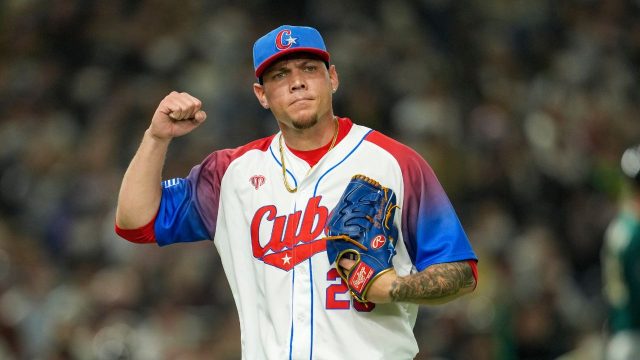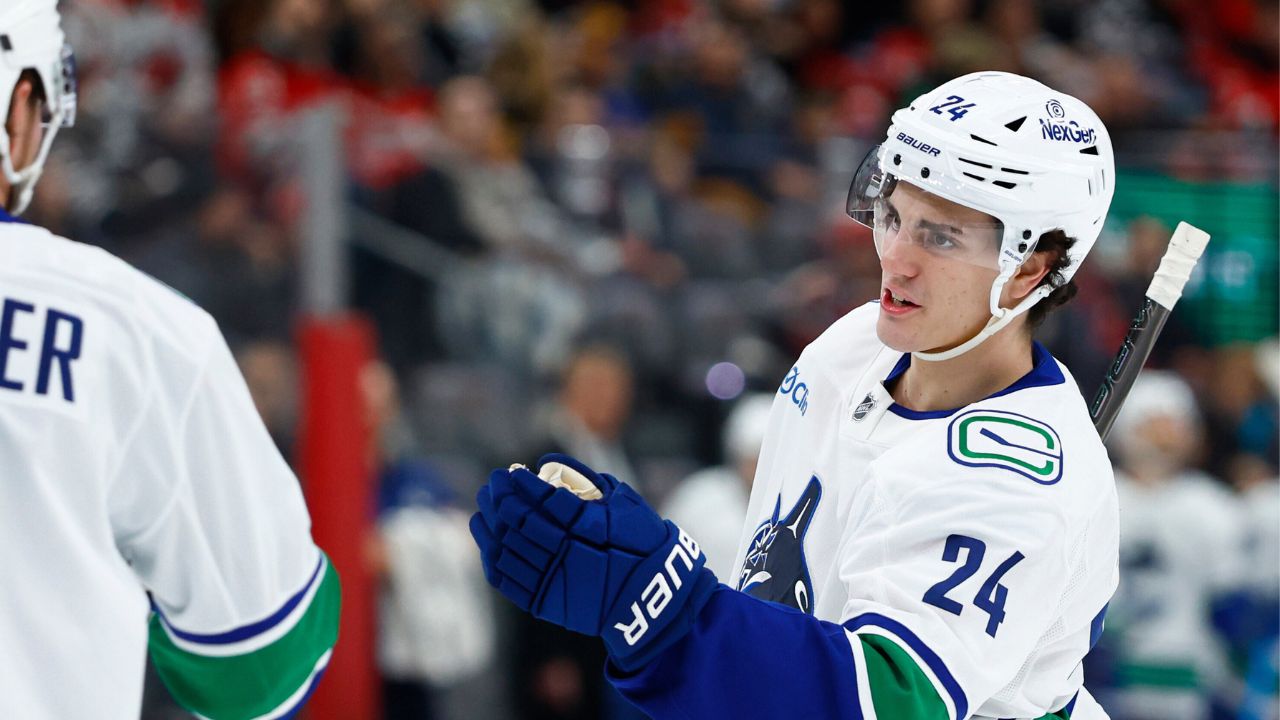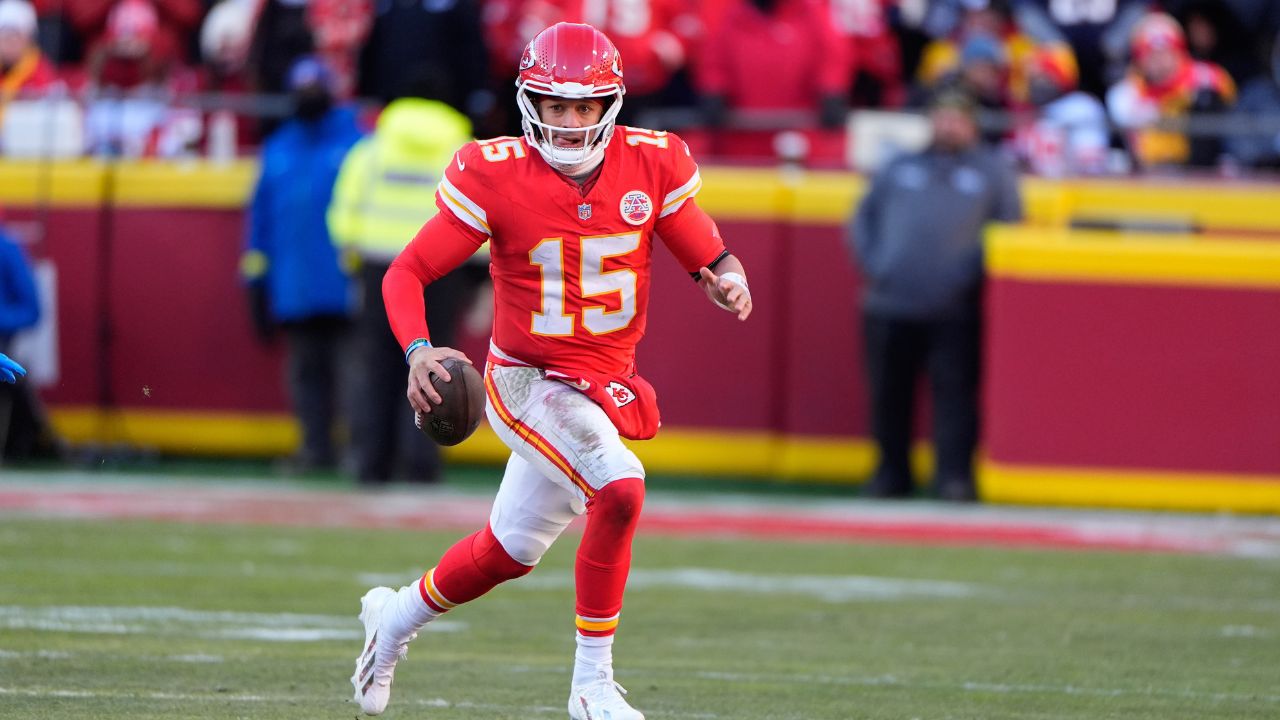
The Toronto Blue Jays have 70 days between now and their regular-season opener, but it’s already apparent that this team’s differentiating strength is designed to be its run prevention.
After scoring the 14th-most runs in the majors last season while allowing the sixth-fewest, the team’s biggest moves of the off-season have been the additions of glove-first players who project to wield below-average bats in Kevin Kiermaier and Isiah Kiner-Falefa.
While there’s reason to believe the team will get better results from some of their hitters, they also haven’t replaced Brandon Belt or Matt Chapman from an offensive standpoint. Even if the team adds a Joc Pederson or Jorge Soler type, its identity is likely to centre around its pitching and defence.
There’s nothing inherently wrong with that. But while the Blue Jays’ offence has room for positive regression, by the same token their pitching and defence can’t be counted on to simply repeat those 2023 results.
A return to form for Alek Manoah is a clear avenue for improvement, but the run-suppression success the team enjoyed last year won’t be easy to replicate. Below are some areas where the Blue Jays’ newfound pitching-and-defence emphasis could be challenged:
José Berríos
Berríos might be the most obvious candidate on the Blue Jays to take a step back from his 2023 season.
The narrative surrounding the right-hander is that he was one of the most consistent pitchers in MLB from 2017-2021, had an inexplicably rough 2022, and returned to form in 2023. That makes sense as in that five-season span he had a 3.78 ERA (landing between 3.52 and 4.00 each year) and his 2023 mark was 3.65.
Zooming in a little further, that characterization begins to weaken. Last season Berríos produced a K/9 (8.73) lower than any one of the seasons of his half-decade of excellence — and well beneath their cumulative average (9.17).
He also dealt with some of the contact management issues he had in 2022, allowing his second-highest xwOBA (.326) and xwOBA on contact (.397) since his disastrous rookie campaign in 2016. As a result, his xERA (4.51) was bloated.
Berríos has tended to slightly over-perform expected numbers and ERA estimators like FIP over the course of his career, but never by a margin of nearly a full run per nine innings. If he can’t induce softer contact in 2024 than he did last year, he has a slim chance of replicating last year’s success.
Yusei Kikuchi
Kikuchi is a tough player to project because he became a different pitcher in 2023 than he’d ever been before.
Part of that was the introduction of a curveball to his repertoire that became his best offering for inducing whiffs (30.7 per cent). He also improved his overall control, making a profound step forward with his fastball command in particular.
With better tools at his disposal he was able to weather difficult situations and see fewer of his outings unravel. By the end of 2023 he was one of the best stories of the Blue Jays’ season.
It’s tough to know where that leaves him for 2024. He’s clearly evolved beyond the pitcher he was in the first four years of his MLB career. It’s conceivable that he found his footing in 2023 and takes another step forward in 2024.
At the same time, the smart money would be on a small step back. Kikuchi posted an identical ERA (3.86) to Spencer Strider and Freddy Peralta last season, and he’s probably not quite in that tier of pitchers.
The southpaw’s 4.27 xERA in 2023 tells the story of a guy who enjoyed some good fortune and his walk rate (2.56 BB/9) fell to exceptionally low levels for a pitcher with his history. Add in the fact that he held opponents to a .211/.255/.311 line with runners in scoring position, and it’s clear that some of his breakout campaign was built on an uneasy foundation.
Even if Kikuchi had finished last season with the 4.27 ERA his expected numbers point to, that would’ve been an incredible accomplishment in the context of his nightmarish 2022. Something in that area seems like a fair expectation for 2024, but the left-hander’s range of outcomes is massive.
Chris Bassitt
Bassitt’s numbers don’t tell the story of someone about to fall off a cliff, but there are enough warning signs that another season with a 3.60 ERA is improbable.
The veteran enters his age-35 season coming off the first 200-inning campaign of his career. Even though he’s been a durable pitcher lately, that sounds like a bit of a risky proposition. The right-hander also lost 0.9 mph off his fastball last season dropping to an average of 92 mph. That didn’t seem to hurt him, but a continued downward trend could be an issue.
While those things are relatively speculative, you can find reasons to expect a decline in Bassitt’s 2023 numbers. The veteran had an xERA of 4.04 and a FIP of 4.28. He was helped by the fact opposing hitters hit just .221 with runners in scoring position (with a .214 BABIP) and the fact just one of the 12 guys he left on base came around seems a touch fortunate.
Steamer’s projected 2024 ERA for Bassitt is 4.22. That could be a bit steep, but it’s not unreasonable — and shows that repeating his 2023 is an unlikely outcome.
The left side of the infield
For the most part, the Blue Jays’ defence projects to be excellent in 2024.
Most of the same players are back to reprise their 2023 roles, with Kiermaier’s surprising return making the team’s outfield a massive defensive strength once again.
Kiner-Falefa is a Gold Glove winner — albeit in a shortened 2020 season — who is also likely to be a favourite of the Blue Jays’ pitching staff.
All of that said, there is one area of the field where Toronto could see a defensive downturn, and that’s the left side of the infield. The aforementioned Kiner-Falefa should be excellent whenever he’s at third, but right now he’s projected to share that position with Cavan Biggio, and possibly Davis Schneider.
While the former New York Yankee might not be a downgrade from Chapman by himself, the mix of Kiner-Falefa and his fellow third basemen may not combine to be as effective as Chapman was locking down that position every day.
At shortstop Bo Bichette is back coming off posting the best defensive numbers he’s managed in a full MLB season.
Bichette took a big step forward defensively in 2023, and it’s possible that he’s raised his skill level in a way that will carry over to the rest of his career. From a subjective standpoint, he undoubtedly looked better last season than he had in previous campaigns.
At the same time, defensive numbers are notoriously volatile on a year-to-year basis, and the aging curve for fielding value suggests glovework is a young man’s game. Bichette isn’t old by any stretch of the imagination — but even in his mid twenties, finding a new level defensively would be an unusual outcome.
If Bichette looks closer to his 2021 or 2022 self in the field, and a third-base timeshare is a mixed bag, the left side of the infield could be a problem area for Toronto’s run-prevention efforts.







